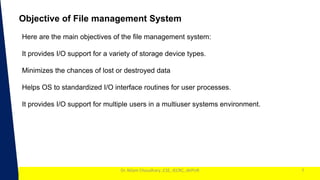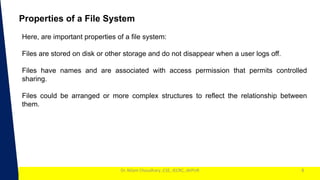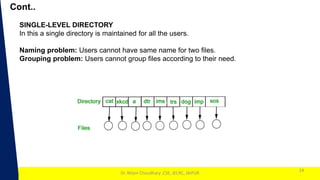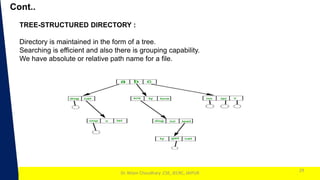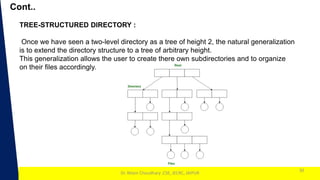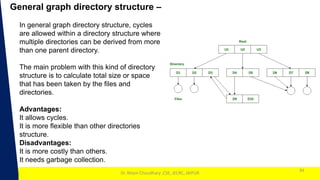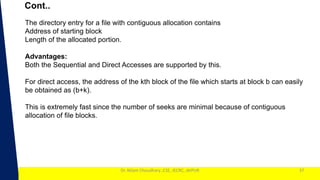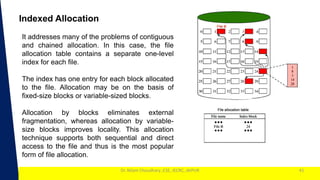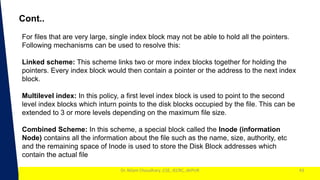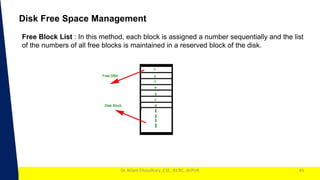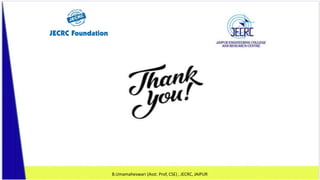The document discusses various topics related to file management in operating systems. It defines what a file is, the objectives of file management systems, properties of file systems, different file structures, attributes, types, access methods, space allocation techniques, and directories. It provides details on sequential, random, and indexed sequential access methods and linked, indexed, and contiguous allocation.






